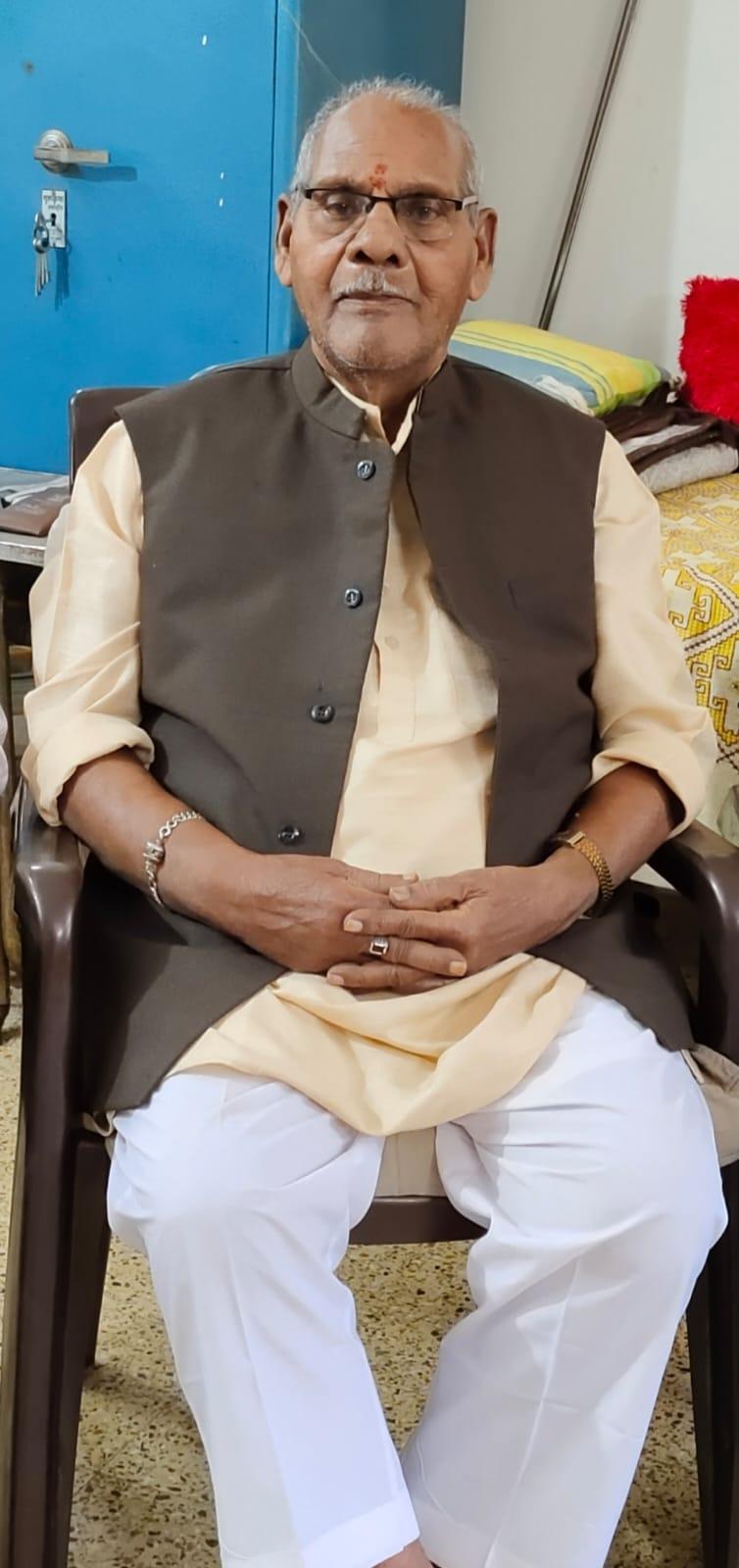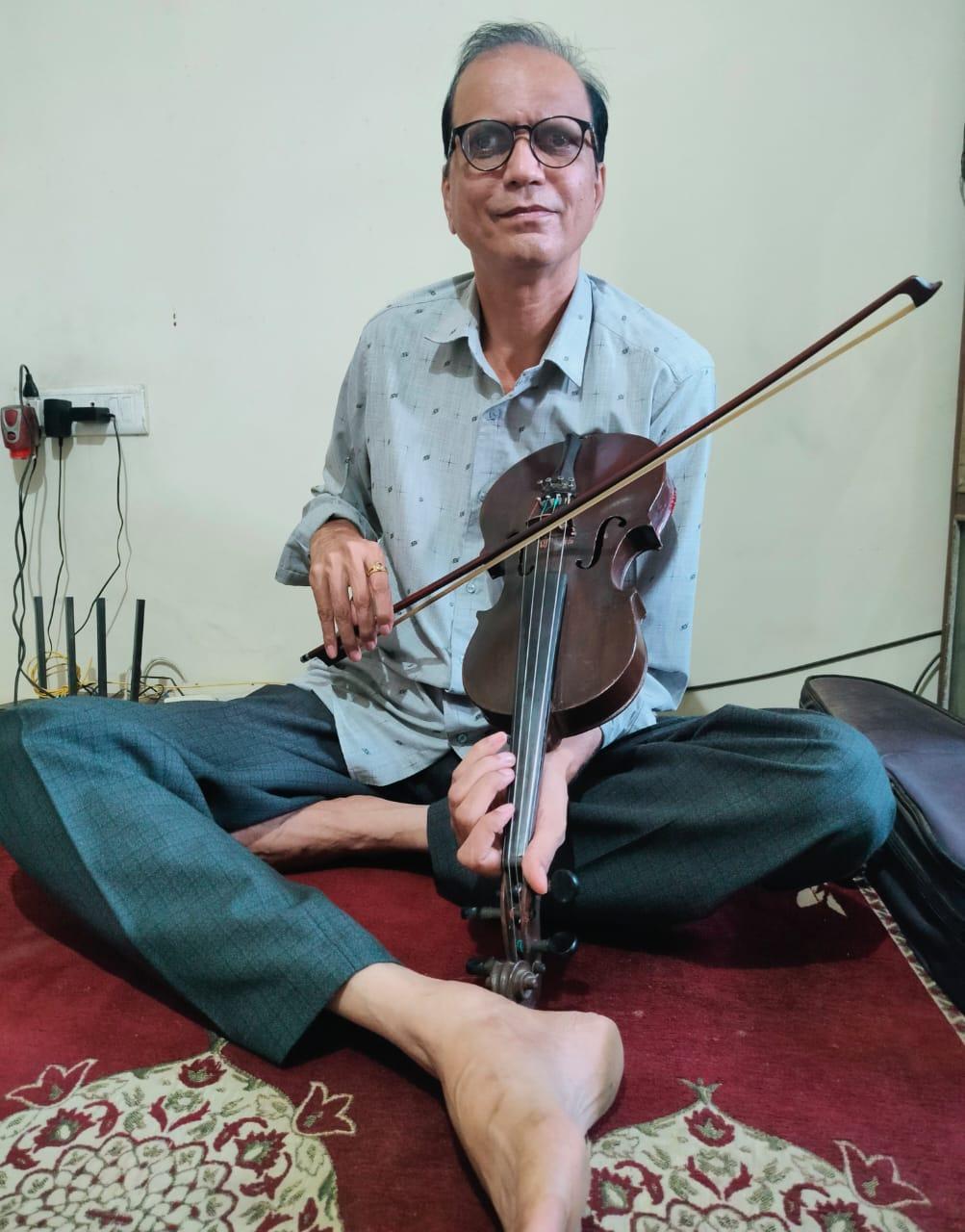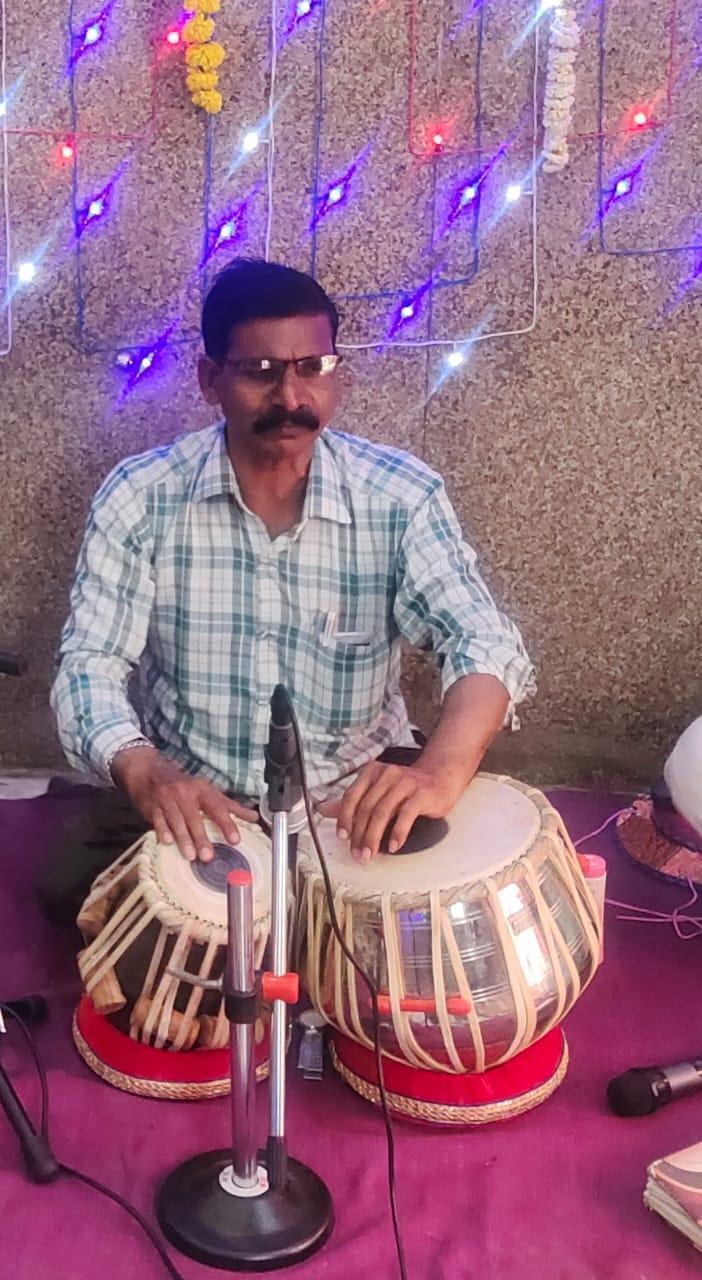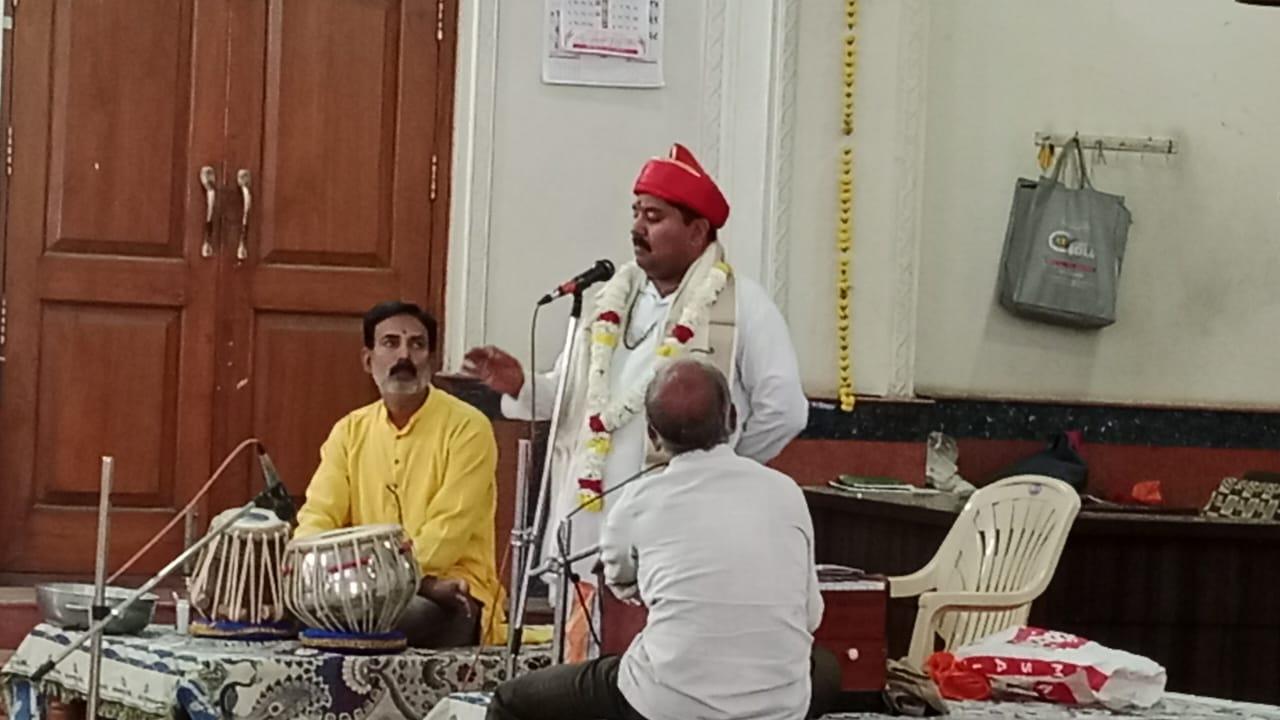BHANDARA
Artforms
Last updated on 21 July 2025. Help us improve the information on this page by clicking on suggest edits or writing to us.
Literary & Performing Arts
Dandar
Dandar is a folk performance tradition in Bhandara district, primarily staged after the festival of Diwali. The performances usually take place during village fairs, which last for approximately fifteen days when residents return to their native places.
Dandar typically includes dramatizations of episodes from the Mahabharat, the Ramayan, and various Puranic texts. These performances combine narrative and musical elements and are intended to convey cultural and ethical themes. A distinctive feature of Dandar is the portrayal of female characters by male actors, which introduces elements of humor and simplifies the presentation of complex narratives. Performances are accompanied by traditional instruments such as the dholak and daf.
Nukkad
Nukkad, or street theater, is a performance-based art form in Bhandara that focuses on raising awareness of social issues. It is used as a platform for community engagement and dialogue, with many local drama groups producing plays that highlight topics of public concern. This grassroots form of theater is a prominent tool for education and social change in the region.
Nautanki
Nautanki is a theatrical form primarily intended for entertainment and often incorporates comedic elements. In Bhandara district, locals say that Nautanki has traditionally been male-dominated, with limited participation by female performers.
Individuals associated with local theatre include Ranjan Paithankar, a director of children's plays such as Goodbye Dr. Aswal Kaka, written by Ranjan Darvekar. Notably, locals point out that this play has been performed approximately 100 times. Manoj Dadhi, a school teacher, was involved in theatre through student training and independent productions. Madhav Ramekar, also a teacher and playwright, has directed works including Chirwant, Eik Janmejaya, and Gautala Jevha Bhale Phutatat, and has collaborated with various Marathi artists.
Classical Music
Bhandara district has a longstanding tradition of classical music, maintained over generations by local families. Notable among these are the Hande and Nanoti families, who have been involved in the preservation and promotion of this musical heritage through educational institutions and performances.

One of the central institutions in this musical landscape is the Nanoti Sangeet Mahavidyalaya, a classical music school associated with the Nanoti family, long known for their role in the district’s musical activities. Gajananrao Nanoti, the head of the Nanoti family, is well-recognized locally for his role in sustaining and promoting the district’s classical music traditions.

Other members of the local music community include Raju Nanoti, a tabla player, and Sarang Hande, a violinist. Both are active performers and are known for engaging with their art while navigating physical challenges—Nanoti with a locomotor disability and Hande with visual impairment.


Other notable figures include Vinod Patthe, proficient in tabla and harmonium; Shraddha Ramekar, a classical vocalist and school teacher; Rahul Bhore, a music educator and singer; and Sudheer Mahajan, a multi-instrumentalist. Swati Ambhorkar, a classical singer and teacher, is also recognized for her continued engagement with music.

Their collective involvement, in many ways, illuminates the strength of the local classical music scene in Bhandara, where tradition continues through active participation and teaching.
Kirtan
Kirtan is a traditional art form that combines musical narration with devotional chanting. It typically involves the recitation of hymns and mantras, accompanied by musical instruments. Rooted in spiritual and religious practices, Kirtan also serves as a medium for transmitting moral values and fostering community engagement. In Bhandara district, Kirtan is performed regularly during religious events and festivals, including Mahashivratri, the month of Shravan, and Das Navami.

A person performing Kirtan is known as a Kirtankar (also spelled Kirtankara, कीर्तनकार). In Bhandara district, the practice is associated with several individuals across different generations. Bhaiyajji Vekhande is known to have performed Kirtans in various villages in the region. Ganesh Chepe is another performer frequently involved in events during the Shravan period. Gauri Dadhi represents a younger group of Kirtankars and has been active in recent local performances. Additionally, Sumant Deshpande is involved in the tradition as an orator, with a focus on subjects related to the Varkari tradition and its philosophical themes.
Handicrafts
Tussar Silk Sarees
Bhandara district is an important center for silk production in Maharashtra which has a long-standing tradition of handloom weaving. The district is known for two main types of sarees made from Tussar silk, namely Karvati silk sarees and Hatmag (handloom) silk sarees. These are traditionally produced by artisans of the Koshti community in villages such as Andhalgaon, Mohadi, and Palandur.
The origins of Karvati sarees are regarded by many to be rooted in this region, and the sarees have an interesting story behind them.
![A Tusar Silk Saree woven with Karvati borders in Bhandara district.[1]](/media/culture/images/maharashtra/bhandara/artforms/a-tusar-silk-saree-woven-with-karvati-borde_A6muEnt.png)
They, fascinatingly, have a unique origin tied to the local craft of making cotton towels (gamchhas). Early weavers used 20s cotton yarn and created a distinctive saw-tooth border, which led to the name—karvat meaning “saw” and kinar meaning “border” in Marathi. Over time, as Tussar cocoons became more accessible in the area, weavers began using raw Tussar silk, harvested from forest trees by indigenous communities, to produce sarees instead of towels. The silk is collected from forest trees by indigenous communities and is known for its natural golden color and coarse texture, which makes it different from regular silk.
![A weaver at work on a traditional pit loom with a Nagpuri wooden dobby, used in the making of Karvati Kinar sarees at a Vemshala artisan collective.[2]](/media/culture/images/maharashtra/bhandara/artforms/a-weaver-at-work-on-a-traditional-pit-loom-_vxkp5by.png)
The sarees are woven by hand on wooden looms, using a method where three different shuttles (the tools that carry thread) are used to create the contrast between the body of the saree and the border. The body is usually in its natural, cream-colored silk, while the border is woven with dyed cotton threads to make the design stand out. Some weavers add patterns or checks to the saree, and the end piece, or pallu, often has stripes in colors that match the border.
Hatmag sarees are also made by hand but do not have the saw-tooth border. They are known for their fine, detailed weaving and are simpler in design.
Even though these sarees are still in demand, many weavers say they are paid very little, as middlemen and buyers often purchase them at low prices, leaving the artisans with small profits for their work.
Iron Handicraft
The Khati community in Bhandara district is traditionally involved in the production of iron handicrafts, including items such as ornaments, utensils, and other handcrafted products. This craft, while historically significant, has seen a decline in recognition and practice in recent times, facing challenges similar to those affecting other traditional handicrafts in the region.
Brass Handicraft
Brass craftsmanship has long been part of Bhandara district’s traditional industries and is often linked to the origin of the district’s name, believed by some to derive from the sound “Bhan Bhan” produced during brass work. Today, brass items are recognized as the district’s One District One Product (ODOP) under a government initiative to support local crafts.
Historically, the brass industry in Bhandara was substantial. The colonial district Gazetteer (1908) notes that brass-working was practiced by the Kasars, originally from northern India, and the Panchals, from the south. Brass sheets were imported from Bombay, and old vessels were melted down for reuse. Artisans produced a variety of items, including cups, plates, and large water vessels known as gunds and gangals.
While the craft was once widespread, its presence has declined in recent decades. Locals attribute this to industrialization and the reduced demand for handcrafted items, with only a few artisans, particularly from the Banjara community, continuing the tradition today.
Cultural Programs
Rangoli Utsav
Rangoli is a traditional decorative art form in Maharashtra, often associated with auspiciousness. In Bhandara district, it also serves as a source of income for some practitioners. To support this art, an annual Rangoli exhibition is held in Bhandara, providing a platform for artists such as Chanda Murkute and Neeta Malewar. These artists use their designs to convey social messages on topics such as environmental conservation and female foeticide.
Geet Ramayan
Geet Ramayan is an annual cultural program in Bhandara district conducted during Ram Navami. Local artists perform musical renditions based on the Ramayan, focusing on the life of Bhagwan Ram. The event serves both as a celebration of traditional narratives and as a platform for promoting regional musical practices.
Diwali Pahat
Diwali Pahat is a musical tradition in Bhandara district, held during the Diwali festival. Artists perform Pahatgeet (morning songs) and other traditional melodies during early morning gatherings. The event is intended to foster community participation and contribute to the festive atmosphere associated with Diwali.
Instruments
Tuntuna
The Tuntuna (also called Tuntune) is a single-stringed folk instrument belonging to the ektara class, typically used in devotional and folk music. Traditionally crafted from wood and bamboo, it has a hollow cylindrical body. In Bhandara district, it is historically associated with the Vasudev community, who performed morning songs (Pahatgeet) while visiting households, accompanied by the Tuntuna.
![Tuntune[3]](/media/culture/images/maharashtra/bhandara/artforms/tuntune3-b9a07ea0.png)
Lezim
Lezim refers both to a traditional musical instrument and a folk dance form. The instrument is made of wood and fitted with small metal discs that create a jingling sound when shaken or struck. In Bhandara district, Lezim is commonly used in processions, Palkhi, and Dindi events, contributing rhythm and energy to these performances.
Artists
Pranay Kotangale
Pranay Kotangale is a filmmaker and director from Bhandara district. His short film Umbara received the Best Children’s Film Award at the Chitra Bharti Film Festival. His work focuses on storytelling for younger audiences and is considered part of the growing interest in independent filmmaking within the district.
![Pranay Kotangale accepting Award in Chitra Bharti Film Festival, held in Haryana[4]](/media/culture/images/maharashtra/bhandara/artforms/pranay-kotangale-accepting-award-in-chitra-_eI77zz3.jpg)
Nilkanth Randive
Nilkanth Randive is known for his contributions to local theatre in Bhandara. Active as a stage actor, he has been involved in numerous performances and was awarded the Bhandara Rangbhushan Award in recognition of his work in the performing arts.
Vikram Phadke
Vikram Phadke is a theatre artist who has worked extensively in Marathi theatre. He was honored with the Marathi Asmita Award, which recognizes achievements in the field of Marathi arts and culture. His performances frequently focus on cultural and social issues, and he remains active in regional theatre initiatives.
Sources
Central Provinces District Gazetteers. 1908 (reprinted in 2008). Bhandara District, Vol. A. Gazetteer Department, Government of Maharashtra, Bombay.
Government of Maharashtra. 2022. One District One Product – Maharashtra State. Directorate of Industries (Export Division), Industries Department, Government of Maharashtra. Accessed March 18, 2025.https://maitri.mahaonline.gov.in/PDF/MHODOPB…
Vemshala. Karvati Kinar Vidarbha Sarees. Vemshala. Accessed March 18, 2025.https://www.vemshala.com/blogs/collectives/k…
Last updated on 21 July 2025. Help us improve the information on this page by clicking on suggest edits or writing to us.